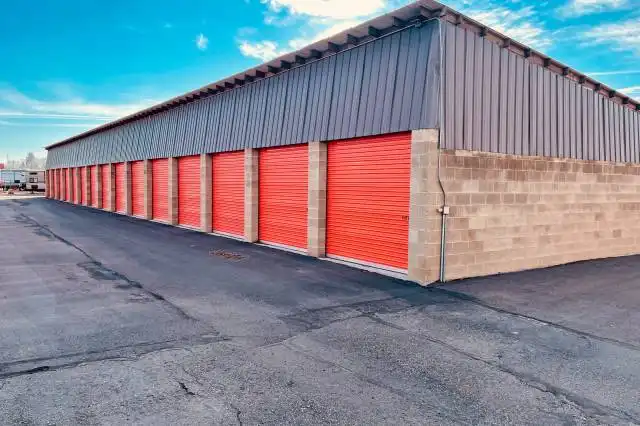Start a Tool Rental Business
Becoming the Superhero of DIY Enthusiasts and Professional Builders
| Updated


TOOL RENTAL BUSINESS
Dive into the entrepreneurial pool by launching a tool rental business - a venture that's not only profitable but also practical. Imagine becoming the superhero of DIY enthusiasts and professional builders alike, supplying them with the tools they need to create their masterpieces. This business won't demand you to reinvent the wheel; you just have to lend it! Essentially, a tool rental business provides access to various equipment and tools for customers who need them for specific periods, hence saving them from costly purchases.
Jump to Business Plan
RELATED BUSINESS IDEAS
Browse ALL Rental & Delivery Services Business Ideas
Discover Your Perfect Domain
Unlock the door to your online success with our hand-picked selection of premium domain names. Whether you're starting a new venture or rebranding an existing one, the right domain can set the tone for your digital presence. Browse through our curated list, each with its unique potential to enhance your brand's visibility and credibility.
TOOL RENTAL MINI BUSINESS PLAN
This a quick reality check to help you identify the strengths and weaknesses of your business concept before you dive in.
Tool Rental Business Quick Facts
Expected Percent Margin:
- Gross Margin: 50-70%
- Net Profit Margin: 10-30%
Earnings Expectations:
- Daily Earnings: $300 - $800
- Weekly Earnings: $2,100 - $5,600
- Monthly Earnings: $9,000 - $24,000
- Annual Earnings: $108,000 - $288,000
Actions to Hit Those Numbers:
Inventory Management:
- Initial Investment: At least $50,000-$100,000 for diverse, quality inventory.
- Supplier Network: Develop relationships with at least 5-10 reliable tool manufacturers.
Marketing and Customer Acquisition:
- Website: Develop an informative, user-friendly website and utilize SEO strategies.
- Local Advertising: Budget at least $1,000 a month for local print, online, and radio ads.
Sales and Customer Service:
- Staffing: Hire 1-2 full-time staff with deep knowledge on various tools.
- Customer Experience: Offer excellent customer service to generate repeat customers.
Cost Control:
- Rent: Find a location where rent is less than 10% of expected monthly sales.
- Utilities and Maintenance: Allocate about $500-$1000 per month.
Business Operations:
- Open Hours: Open at least 6 days a week, ideally 7 to accommodate weekend DIY-ers.
- Transaction Volume: Aim for 15-30 transactions per day with a diverse price range depending on the tools rented.
These estimations are generalized and can vary depending on location, economic conditions, and specific business strategies. A business plan and further consultation with a financial advisor is recommended for personalized advice.
NOT WHAT YOU HAD IN MIND? Here are more ideas



Browse ALL Rental & Delivery Services Business Ideas
Grab Your Business Website Name
Before you get caught up in the whirlwind of setting up your business, invest in a domain name. It's a small but significant step that lays the foundation for your brand and makes it easier for customers to find and trust you. Just like you wouldn't build a house without securing the land first, don't build a business without securing your domain name.
"Why? Can't that wait?" Here's why it shouldn't
Step 1: Determine if a Tool Rental Business is Right for You
Breakdown of Startup Expenses
When starting a tool rental business, it is important to understand the startup expenses that will be incurred. These expenses can include the cost of purchasing the tools and equipment, renting a space to store the tools and equipment, and any necessary licenses or permits. Additionally, you will need to factor in the cost of advertising and marketing to get the word out about your business. It is important to research the costs associated with each of these items and to create a budget that will allow you to cover all of the necessary expenses.
Breakdown of Ongoing Expenses
Once the business is up and running, there will be ongoing expenses that must be taken into account. These expenses can include the cost of maintaining the tools and equipment, paying for insurance, and any necessary repairs or replacements. Additionally, you will need to factor in the cost of marketing and advertising to keep your business visible. It is important to research the costs associated with each of these items and to create a budget that will allow you to cover all of the necessary expenses.
Examples of Ways to Make Money
Once the business is up and running, there are a variety of ways to make money. One way is to charge a rental fee for the use of the tools and equipment. Additionally, you can charge a fee for any repairs or maintenance that is done on the tools and equipment. You can also offer additional services such as delivery and pick-up of the tools and equipment, or offer discounts for long-term rentals. It is important to research the costs associated with each of these items and to create a pricing structure that will allow you to make a profit.
Step 2: Name the Business
When it comes to naming a business, it is important to come up with a name that is memorable and unique. It should also be easy to pronounce and spell. It is also important to make sure the name is not already being used by another business. A good way to brainstorm ideas for a business name is to think of words that are related to the business and then combine them to create a unique name. Additionally, it is important to research the name to make sure it is not trademarked or copyrighted.
It can also be helpful to use a domain name generator to help come up with ideas. This tool can help to generate a list of potential names that are available for use. Additionally, it can be beneficial to use a thesaurus to come up with creative words that can be used in the business name. Once a name has been chosen, it is important to make sure the domain name is available and that the name is not already trademarked.
Another important factor to consider when naming a business is the target audience. It is important to come up with a name that resonates with the target audience and that conveys the message of the business. Additionally, it is important to make sure the name is easy to remember and that it stands out from the competition.
Finally, it is important to make sure the name is not too long or complicated. A good rule of thumb is to keep the name to two or three words. This will make it easier to remember and will also make it easier to register the business name.
Step 3: Obtain Necessary Licenses and Permits
The third step in starting a tool rental business is to obtain the necessary licenses and permits. Depending on the state and local regulations, there may be several different types of licenses and permits that are required. It is important to research the local regulations and obtain the necessary licenses and permits before opening the business.
In most cases, a business license will be required. This is a general license that allows the business to operate legally. Depending on the type of tools being rented, there may also be additional licenses or permits that are required. For example, if the business is renting out power tools, there may be additional safety regulations that must be followed.
In addition to the business license, there may also be zoning permits that are required. These permits will ensure that the business is operating in an area that is zoned for commercial use. It is important to research the local zoning regulations to ensure that the business is in compliance.
Finally, it is important to research the local regulations regarding taxes. Depending on the state and local regulations, there may be taxes that must be paid on the rental of tools. It is important to understand the tax regulations and ensure that the business is in compliance.
Step 4: Choose a Business Structure
Choosing the right business structure is an important step in starting a tool rental business. The most common business structures are sole proprietorship, partnership, limited liability company (LLC), and corporation. Each structure has its own advantages and disadvantages, so it is important to research and understand the differences before making a decision.
When deciding on a business structure, consider the size of the business, the number of owners, the amount of liability, and the tax implications. A sole proprietorship is the simplest and least expensive business structure to set up, but it offers no protection from personal liability. A partnership is similar to a sole proprietorship, but it allows two or more people to own the business. A limited liability company (LLC) is a hybrid of a partnership and a corporation, and it offers limited personal liability protection. A corporation is the most complex and expensive business structure to set up, but it offers the most protection from personal liability.
Once the business structure has been chosen, the next step is to register the business with the state. This process will vary depending on the state and the business structure chosen. It is important to research the state’s requirements and to consult with a lawyer or accountant to ensure the business is properly registered. Additionally, the business may need to obtain a federal tax identification number and any necessary licenses or permits.
Finally, it is important to keep accurate records of all business transactions. This includes tracking income, expenses, and any other financial information related to the business. Keeping accurate records will help ensure the business is compliant with state and federal laws and will make filing taxes easier.
Step 5: Secure a Business Location
Securing a business location is a crucial step in starting a tool rental business. It is important to find a space that is large enough to store the tools and equipment, as well as provide a safe and secure environment for customers to rent from. Additionally, the space should be easily accessible to customers and have ample parking. It is also important to consider the cost of renting or purchasing the space. Renting a space may be more cost effective at first, but purchasing a space may be a better long-term investment.
When selecting a business location, it is important to research the local zoning laws and regulations. It is also important to consider the demographics of the area and the potential customer base. Additionally, it is important to consider the competition in the area and how the business can stand out. Finally, it is important to consider the visibility of the business location. The space should be easily accessible and visible to potential customers.
Step 6: Purchase Necessary Equipment
When starting a tool rental business, it is important to purchase the necessary equipment to get the business up and running. This includes tools, such as ladders, drills, saws, and other equipment that customers may need to rent. It is important to research the types of tools that are in demand in the area, as well as the prices of the tools. Additionally, it is important to consider the cost of maintenance, storage, and insurance for the equipment. It is also important to consider the cost of delivery, if the business will offer delivery services. Finally, it is important to consider the cost of any additional staff that may be needed to help manage the equipment.
Step 7: Develop a Business Plan
A business plan is an essential document for any business, and a tool rental business is no exception. It should include a detailed description of the business, a market analysis, a financial plan, and a marketing plan. It should also include a detailed description of the products and services offered, a description of the target market, and a description of the competitive landscape. The business plan should also include a detailed breakdown of startup expenses and ongoing expenses, as well as a plan for how the business will generate revenue. Additionally, the business plan should include a timeline for when the business will be operational and when it will be profitable. Finally, the business plan should include a risk assessment and a contingency plan for how the business will respond to unexpected events.
Step 8: Market Your Business
Once you have your business up and running, it’s time to start marketing it. You can do this through a variety of methods, such as social media, print advertising, and word-of-mouth. You can also create a website and use SEO techniques to help get your business noticed. Additionally, you can use email marketing to reach out to potential customers and let them know about your services. You should also consider attending trade shows and other events to get your business in front of potential customers. Finally, you can also use traditional methods such as flyers and postcards to get the word out about your business.
Step 9: Keep Accurate Financial Records
The ninth and final step in starting a tool rental business is to keep accurate financial records. This is an important step that should not be overlooked. It is important to track all of your income and expenses in order to stay profitable and ensure that you are paying taxes correctly. Keeping accurate financial records will also help you to identify areas where you can save money and make more efficient use of your resources.
When it comes to keeping financial records, you should use accounting software to track your income and expenses. This will help you to easily keep track of all of your transactions and will make it easier to generate financial reports. Additionally, you should keep all of your receipts and invoices in an organized manner so that you can easily access them when needed.
You should also create a budget for your business and track your spending against it. This will help you to identify areas where you can save money and make more efficient use of your resources. Additionally, you should have a system in place for tracking customer payments and collecting any overdue payments.
Finally, you should consult with an accountant or financial advisor to ensure that you are staying on top of your finances and that you are taking advantage of any tax deductions or credits that may be available to you. An accountant or financial advisor can also help you to create a plan for managing your cash flow and ensuring that your business is profitable.
EXPLORE MORE CATEGORIES
Browse ALL Business Idea Categories
TAKE THE NEXT STEPS









